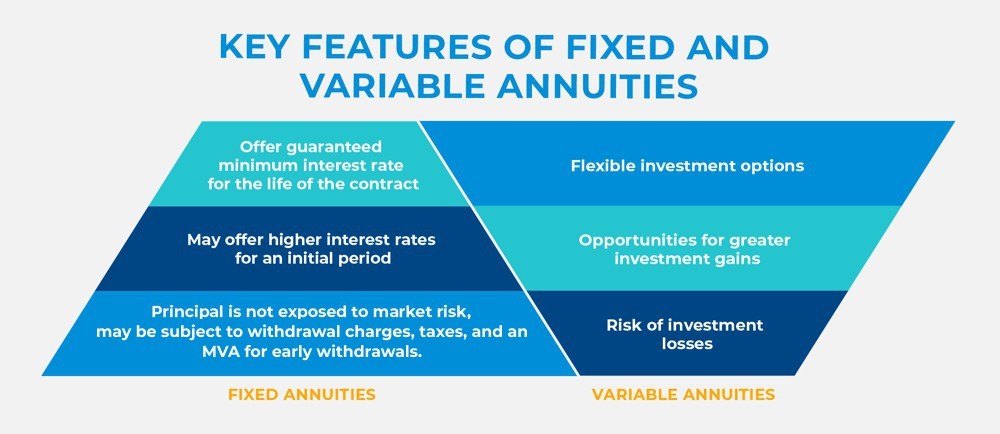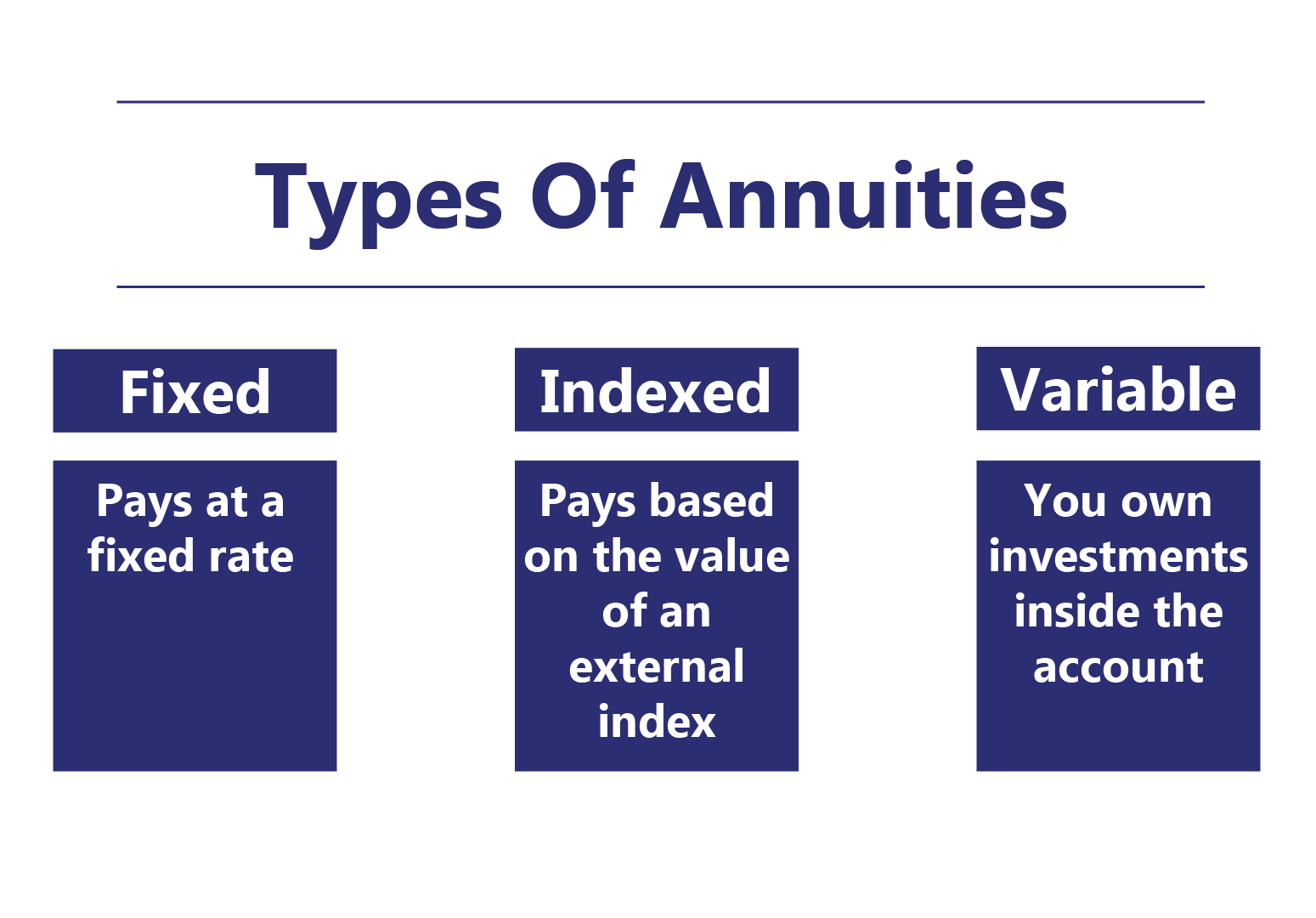All Categories
Featured
Table of Contents
Equally as with a fixed annuity, the proprietor of a variable annuity pays an insurance coverage firm a swelling amount or collection of repayments in exchange for the pledge of a series of future repayments in return. However as mentioned above, while a taken care of annuity grows at an ensured, continuous rate, a variable annuity grows at a variable rate that relies on the efficiency of the underlying financial investments, called sub-accounts.

During the accumulation stage, assets purchased variable annuity sub-accounts expand on a tax-deferred basis and are tired just when the agreement owner withdraws those earnings from the account. After the build-up stage comes the revenue stage. Over time, variable annuity possessions must in theory increase in value until the contract proprietor decides he or she would love to start taking out cash from the account.
The most significant problem that variable annuities generally existing is high cost. Variable annuities have several layers of costs and expenditures that can, in accumulation, create a drag of up to 3-4% of the agreement's worth each year.
Decoding How Investment Plans Work A Comprehensive Guide to Investment Choices What Is Fixed Interest Annuity Vs Variable Investment Annuity? Features of Smart Investment Choices Why Choosing the Right Financial Strategy Is a Smart Choice How to Compare Different Investment Plans: How It Works Key Differences Between Different Financial Strategies Understanding the Key Features of Long-Term Investments Who Should Consider Strategic Financial Planning? Tips for Choosing Fixed Indexed Annuity Vs Market-variable Annuity FAQs About Fixed Vs Variable Annuity Common Mistakes to Avoid When Choosing Fixed Index Annuity Vs Variable Annuity Financial Planning Simplified: Understanding Your Options A Beginner’s Guide to Smart Investment Decisions A Closer Look at How to Build a Retirement Plan
M&E expense fees are computed as a portion of the contract worth Annuity companies hand down recordkeeping and other administrative prices to the agreement proprietor. This can be in the type of a level yearly charge or a portion of the contract worth. Management fees may be included as part of the M&E danger charge or might be analyzed independently.
These costs can vary from 0.1% for easy funds to 1.5% or more for actively taken care of funds. Annuity contracts can be personalized in a variety of methods to serve the particular demands of the contract proprietor. Some usual variable annuity cyclists consist of ensured minimal buildup advantage (GMAB), guaranteed minimum withdrawal benefit (GMWB), and assured minimal income advantage (GMIB).

Variable annuity payments supply no such tax obligation reduction. Variable annuities have a tendency to be highly inefficient lorries for passing wide range to the future generation due to the fact that they do not delight in a cost-basis change when the initial agreement owner passes away. When the owner of a taxed investment account dies, the cost bases of the financial investments held in the account are adapted to reflect the market prices of those investments at the time of the proprietor's fatality.
Understanding Fixed Annuity Vs Variable Annuity A Closer Look at Choosing Between Fixed Annuity And Variable Annuity What Is the Best Retirement Option? Features of Smart Investment Choices Why Choosing the Right Financial Strategy Matters for Retirement Planning How to Compare Different Investment Plans: Simplified Key Differences Between Different Financial Strategies Understanding the Rewards of Long-Term Investments Who Should Consider Strategic Financial Planning? Tips for Choosing Fixed Index Annuity Vs Variable Annuity FAQs About Variable Annuity Vs Fixed Annuity Common Mistakes to Avoid When Choosing Fixed Income Annuity Vs Variable Annuity Financial Planning Simplified: Understanding Fixed Vs Variable Annuity Pros And Cons A Beginner’s Guide to Fixed Vs Variable Annuities A Closer Look at How to Build a Retirement Plan
Successors can inherit a taxable investment profile with a "tidy slate" from a tax obligation viewpoint. Such is not the situation with variable annuities. Investments held within a variable annuity do not obtain a cost-basis modification when the original owner of the annuity passes away. This indicates that any built up unrealized gains will be passed on to the annuity owner's beneficiaries, together with the connected tax concern.
One considerable issue associated with variable annuities is the potential for disputes of passion that might feed on the part of annuity salesmen. Unlike a monetary consultant, who has a fiduciary obligation to make financial investment choices that profit the client, an insurance broker has no such fiduciary commitment. Annuity sales are highly lucrative for the insurance policy professionals who sell them because of high in advance sales payments.

Several variable annuity agreements contain language which places a cap on the percent of gain that can be experienced by specific sub-accounts. These caps avoid the annuity proprietor from totally participating in a section of gains that might otherwise be appreciated in years in which markets create considerable returns. From an outsider's point of view, it would appear that investors are trading a cap on financial investment returns for the abovementioned ensured floor on financial investment returns.
As kept in mind over, surrender fees can drastically restrict an annuity proprietor's ability to move properties out of an annuity in the very early years of the agreement. Additionally, while the majority of variable annuities enable contract owners to take out a specified amount during the accumulation stage, withdrawals yet amount usually result in a company-imposed charge.
Withdrawals made from a set passion rate financial investment alternative could also experience a "market price adjustment" or MVA. An MVA readjusts the worth of the withdrawal to mirror any type of modifications in interest rates from the time that the cash was invested in the fixed-rate alternative to the moment that it was taken out.

Frequently, even the salesmen who sell them do not fully understand exactly how they function, therefore salesmen in some cases prey on a buyer's feelings to offer variable annuities instead of the merits and suitability of the items themselves. Our company believe that investors must fully recognize what they possess and how much they are paying to possess it.
Breaking Down Fixed Income Annuity Vs Variable Annuity Key Insights on Your Financial Future Defining the Right Financial Strategy Features of Fixed Vs Variable Annuity Pros Cons Why Fixed Vs Variable Annuity Matters for Retirement Planning Variable Annuity Vs Fixed Annuity: Simplified Key Differences Between Fixed Vs Variable Annuity Pros And Cons Understanding the Risks of Fixed Income Annuity Vs Variable Growth Annuity Who Should Consider Strategic Financial Planning? Tips for Choosing Variable Annuity Vs Fixed Annuity FAQs About Planning Your Financial Future Common Mistakes to Avoid When Choosing a Financial Strategy Financial Planning Simplified: Understanding Fixed Vs Variable Annuity A Beginner’s Guide to Indexed Annuity Vs Fixed Annuity A Closer Look at How to Build a Retirement Plan
Nonetheless, the exact same can not be claimed for variable annuity properties kept in fixed-rate financial investments. These properties legitimately come from the insurance provider and would for that reason be at risk if the firm were to stop working. Any type of assurances that the insurance policy business has concurred to supply, such as a guaranteed minimal income advantage, would be in question in the event of an organization failing.
For that reason, potential buyers of variable annuities need to recognize and consider the monetary problem of the providing insurance policy firm prior to entering into an annuity agreement. While the advantages and drawbacks of numerous sorts of annuities can be disputed, the actual issue surrounding annuities is that of viability. Simply put, the question is: that should own a variable annuity? This concern can be hard to respond to, provided the myriad variants readily available in the variable annuity cosmos, but there are some fundamental standards that can help capitalists make a decision whether or not annuities should play a duty in their economic plans.
Besides, as the claiming goes: "Buyer beware!" This short article is prepared by Pekin Hardy Strauss, Inc. Fixed indexed annuities. ("Pekin Hardy," dba Pekin Hardy Strauss Wide Range Administration) for educational objectives just and is not planned as an offer or solicitation for business. The details and data in this write-up does not comprise lawful, tax obligation, audit, investment, or other specialist recommendations
Table of Contents
Latest Posts
Understanding Financial Strategies Everything You Need to Know About Fixed Income Annuity Vs Variable Growth Annuity What Is the Best Retirement Option? Benefits of Choosing the Right Financial Plan W
Highlighting Fixed Income Annuity Vs Variable Growth Annuity A Comprehensive Guide to Retirement Income Fixed Vs Variable Annuity Breaking Down the Basics of Investment Plans Features of Smart Investm
Understanding What Is A Variable Annuity Vs A Fixed Annuity A Closer Look at How Retirement Planning Works Defining the Right Financial Strategy Advantages and Disadvantages of Variable Annuities Vs F
More
Latest Posts